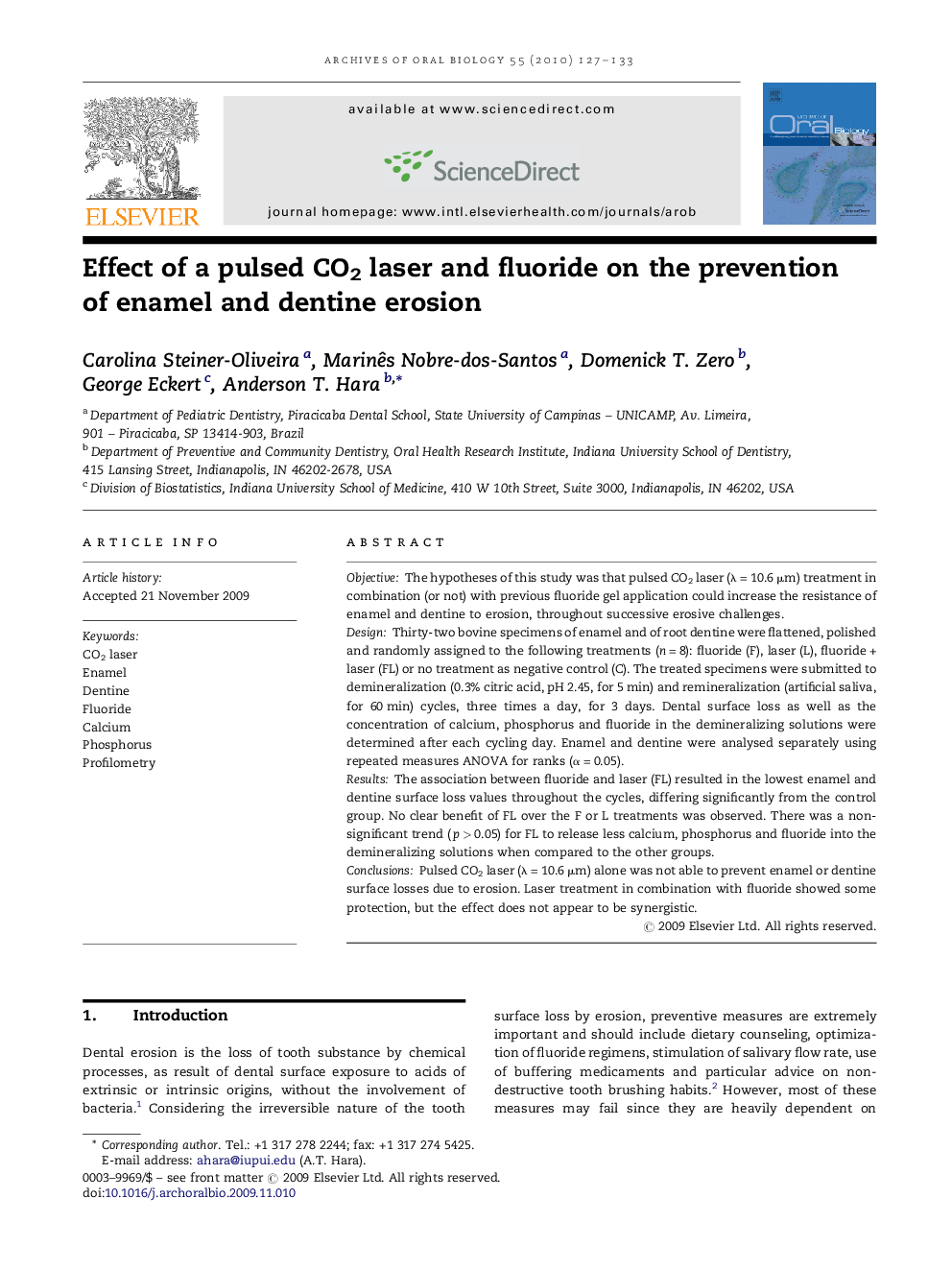| کد مقاله | کد نشریه | سال انتشار | مقاله انگلیسی | نسخه تمام متن |
|---|---|---|---|---|
| 3121538 | 1583363 | 2010 | 7 صفحه PDF | دانلود رایگان |

ObjectiveThe hypotheses of this study was that pulsed CO2 laser (λ = 10.6 μm) treatment in combination (or not) with previous fluoride gel application could increase the resistance of enamel and dentine to erosion, throughout successive erosive challenges.DesignThirty-two bovine specimens of enamel and of root dentine were flattened, polished and randomly assigned to the following treatments (n = 8): fluoride (F), laser (L), fluoride + laser (FL) or no treatment as negative control (C). The treated specimens were submitted to demineralization (0.3% citric acid, pH 2.45, for 5 min) and remineralization (artificial saliva, for 60 min) cycles, three times a day, for 3 days. Dental surface loss as well as the concentration of calcium, phosphorus and fluoride in the demineralizing solutions were determined after each cycling day. Enamel and dentine were analysed separately using repeated measures ANOVA for ranks (α = 0.05).ResultsThe association between fluoride and laser (FL) resulted in the lowest enamel and dentine surface loss values throughout the cycles, differing significantly from the control group. No clear benefit of FL over the F or L treatments was observed. There was a non-significant trend (p > 0.05) for FL to release less calcium, phosphorus and fluoride into the demineralizing solutions when compared to the other groups.ConclusionsPulsed CO2 laser (λ = 10.6 μm) alone was not able to prevent enamel or dentine surface losses due to erosion. Laser treatment in combination with fluoride showed some protection, but the effect does not appear to be synergistic.
Journal: Archives of Oral Biology - Volume 55, Issue 2, February 2010, Pages 127–133